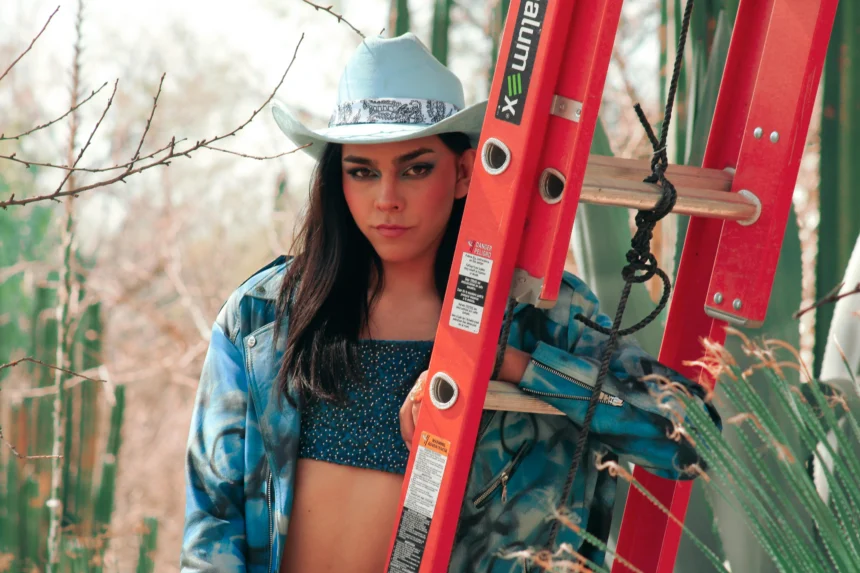In recent years, the boundaries between traditional gender roles in fashion have blurred dramatically. The rise of androgynous fashion has redefined style, encouraging a fluid approach to clothing that transcends labels. Today’s fashion world celebrates individuality, creativity, and diversity, making androgynous fashion not just a trend but a cultural movement. This comprehensive guide explores the evolution, impact, and future of androgynous fashion, while providing insights into its design elements, influential designers, and global influence.
The Evolution of Androgynous Fashion
Historical Roots and Cultural Shifts
The concept of androgyny has been present in art and literature for centuries, but it is only in recent decades that it has taken center stage in the fashion industry. Traditionally, fashion has been divided into strict male and female categories. However, pioneering designers began challenging these norms by incorporating fluid silhouettes, neutral colors, and versatile designs into their collections. This shift not only questioned the conventional dichotomy but also empowered individuals to explore their personal identity without being confined by societal expectations. Throughout the 20th century, movements such as punk, rock, and the counterculture revolution introduced a rebellious spirit that questioned the status quo. Influential figures like David Bowie and Prince blurred gender lines through their style, laying the groundwork for modern androgynous fashion. As these icons gained popularity, they influenced a generation of designers and consumers who increasingly embraced clothing that defies traditional gender norms.
The Modern Renaissance of Androgyny
Today, androgynous fashion is more than a trend; it is a statement of inclusivity and self-expression. Modern designers are revisiting and reimagining the concept, offering collections that allow wearers to express themselves authentically. The resurgence of androgynous fashion reflects a broader cultural shift toward accepting diversity and celebrating individual identity. As the fashion industry continues to evolve, the distinction between masculine and feminine aesthetics is gradually fading, creating a more open and dynamic marketplace.
Key Elements of Androgynous Fashion
Fluid Silhouettes and Versatile Cuts
One of the defining features of androgynous fashion is its focus on fluid silhouettes. Unlike traditional clothing that adheres to strict gendered lines, androgynous pieces often incorporate loose, adaptable cuts that can be styled in various ways. Oversized jackets, straight-leg trousers, and unstructured blazers are staples in this movement, offering comfort without sacrificing style. These versatile designs enable wearers to experiment with layering and accessorizing. The freedom to mix and match different elements of an outfit is a core tenet of androgynous fashion, allowing individuals to create looks that reflect their unique personalities and lifestyles.
Neutral Color Palettes and Minimalist Aesthetics
Neutral colors such as black, white, gray, and earth tones dominate the androgynous fashion landscape. These hues serve as a blank canvas, emphasizing form and structure over flamboyant decoration. Minimalist aesthetics not only simplify the design process but also promote sustainability by focusing on timeless pieces rather than fast-changing trends. This approach aligns with the ethos of androgynous fashion, where the focus is on authenticity and individuality. By stripping down excess ornamentation, designers can highlight the craftsmanship and quality of each garment, ensuring that the style remains relevant regardless of seasonal shifts.
The Role of Fabric and Texture
Fabric choice plays a crucial role in defining androgynous fashion. Lightweight materials such as cotton, linen, and wool blends are popular due to their versatility and comfort. These fabrics can be draped or tailored to suit a variety of body types, making them ideal for creating fluid, unrestrictive designs. Texture also adds depth to androgynous fashion. Combining smooth surfaces with subtle patterns or woven details can create a look that is both sophisticated and contemporary. The interplay of different textures enhances the tactile experience of the garment, adding an extra layer of complexity to minimalist designs.
Influential Designers Shaping Androgynous Fashion
Pioneers and Innovators
Several designers have been at the forefront of the androgynous fashion movement. Visionaries like Yohji Yamamoto and Rei Kawakubo of Comme des Garçons have long challenged traditional silhouettes and embraced non-binary aesthetics in their work. Their groundbreaking designs have paved the way for newer generations of designers to experiment with form and identity.
These pioneers use innovative techniques and unconventional materials to push the boundaries of fashion. Their work is characterized by a fearless approach to design that defies categorization, blending elements of streetwear, haute couture, and avant-garde art. The success of these designers has demonstrated that androgynous fashion can be both commercially viable and artistically significant.
Rising Stars in the Industry
In recent years, an increasing number of emerging designers have joined the ranks of those advocating for gender-neutral clothing. These rising stars are experimenting with cutting-edge techniques, sustainable materials, and innovative design concepts. By doing so, they are not only expanding the aesthetic boundaries of androgynous fashion but also addressing the need for eco-friendly and ethical production practices. Young designers often use digital platforms and social media to share their work, reaching a global audience and inspiring a new generation of consumers. Their fresh perspectives and willingness to challenge traditional norms have infused the fashion industry with a renewed sense of creativity and purpose.
Celebrity Influence and Mainstream Adoption
The influence of celebrities cannot be overstated in the realm of androgynous fashion. High-profile figures such as Tilda Swinton, Jaden Smith, and Sam Smith have been seen sporting gender-fluid outfits, bringing attention to the versatility and appeal of androgynous designs. Their bold choices have played a significant role in normalizing non-binary fashion in mainstream culture. When celebrities embrace androgynous fashion, they not only validate the movement but also inspire their followers to experiment with their own style. This mainstream adoption has led to increased visibility and acceptance, prompting major fashion houses and retailers to incorporate androgynous elements into their collections.
Androgynous Fashion and the Digital Revolution
Social Media’s Role in Spreading the Movement
In today’s digital age, social media platforms like Instagram, TikTok, and Pinterest have become essential channels for promoting androgynous fashion. Influencers and fashion enthusiasts use these platforms to showcase their personal style, share outfit inspirations, and engage with a global community. The visual nature of social media allows for creative expression and rapid dissemination of trends, making it easier for non-traditional fashion to gain momentum. Digital platforms have democratized the fashion industry, allowing independent designers and small brands to reach audiences without relying on traditional media. This shift has enabled a more diverse range of voices and styles to be heard, further fueling the androgynous fashion movement.
The Rise of Virtual Fashion Shows and Digital Runways
The COVID-19 pandemic accelerated the adoption of digital technologies in the fashion industry. Virtual fashion shows and digital runways have become increasingly popular, providing a platform for designers to showcase their collections without the limitations of physical venues. These online events offer a unique opportunity to highlight the fluid and adaptable nature of androgynous fashion. Virtual runways also allow for interactive and immersive experiences, where viewers can engage with the designs in real time. This innovation not only expands the reach of androgynous fashion but also encourages experimentation and collaboration among designers and tech developers.
E-Commerce and the Future of Gender-Neutral Clothing
As the demand for androgynous fashion grows, e-commerce platforms are adapting to meet the needs of modern consumers. Online stores are curating collections that emphasize gender-neutral designs, offering a wide range of sizes, styles, and fits. This inclusivity is essential for ensuring that everyone can find clothing that resonates with their identity. E-commerce also allows for customization and personalization, enabling consumers to tailor garments to their specific needs. By leveraging technology, brands can offer bespoke services that align with the principles of androgynous fashion—versatility, inclusivity, and individuality.
The Cultural Impact of Androgynous Fashion
Challenging Traditional Gender Norms
Androgynous fashion is more than just a style; it is a social movement that challenges deeply ingrained gender norms. By rejecting the binary division of clothing into “men’s” and “women’s” categories, androgynous fashion empowers individuals to define their own identity. This movement encourages a shift in perspective, where fashion becomes a tool for self-expression and liberation. Historically, rigid gender roles have limited personal expression and perpetuated stereotypes. The rise of androgynous fashion signifies a breaking down of these barriers, paving the way for a more open and accepting society. As more people embrace non-binary fashion, traditional expectations are being redefined, fostering a culture of inclusivity and empowerment.
Androgynous Fashion in Media and Pop Culture
Media representation plays a critical role in shaping public perceptions of fashion and identity. Films, television shows, and music videos that feature androgynous styles contribute to a broader acceptance of gender-neutral fashion. Iconic performances and fashion moments in pop culture have highlighted the beauty and versatility of androgynous looks, inspiring countless fans to explore their own unique style. As mainstream media continues to celebrate diverse expressions of identity, the impact of androgynous fashion grows even stronger. This cultural shift is evident in advertising campaigns, magazine editorials, and celebrity endorsements, all of which serve to normalize and elevate the conversation around gender fluidity in fashion.
Social and Political Implications
The emergence of androgynous fashion also has significant social and political implications. It reflects a broader movement towards equality and the dismantling of traditional power structures. By embracing a gender-neutral approach to fashion, society sends a powerful message about inclusivity and respect for individual identity. This progressive mindset extends beyond clothing. It influences policies in workplaces, educational institutions, and public spaces, advocating for a world where everyone has the freedom to express themselves without judgment. Androgynous fashion, therefore, is not just about aesthetics it is a catalyst for social change.
Styling Tips for Embracing Androgynous Fashion
Building a Versatile Wardrobe
To truly embrace androgynous fashion, start by building a wardrobe of versatile, timeless pieces. Invest in high-quality basics like well-fitted trousers, crisp button-down shirts, and neutral-colored jackets that can easily be mixed and matched. These foundational items provide the flexibility to create multiple looks that transcend gender norms. Consider incorporating layered styles that allow for creative experimentation. For example, pairing an oversized sweater with tailored trousers or mixing a structured blazer with casual jeans can create a balanced, non-binary look. The key is to prioritize comfort and self-expression while maintaining a cohesive aesthetic.
Experimenting with Accessories
Accessories are a powerful way to personalize an androgynous look. Opt for items that add a touch of individuality without overwhelming the outfit. Minimalist jewelry, sleek watches, and versatile bags can enhance your style while keeping the overall look balanced. Scarves, hats, and belts also provide opportunities to play with textures and colors, further elevating your ensemble. Mixing masculine and feminine accessories can create an unexpected yet harmonious contrast, highlighting the essence of androgynous fashion. Don’t be afraid to experiment with different combinations until you find a style that feels uniquely you.
Confidence is Key
Regardless of the outfit, the most important aspect of androgynous fashion is confidence. Embracing a non-binary style means breaking free from societal expectations and owning your look. Confidence not only enhances your appearance but also inspires others to explore their own identities. Whether you choose to make a bold statement or opt for a subtle, minimalist approach, remember that your personal style is a reflection of your inner self.
The Future of Androgynous Fashion
Innovations on the Horizon
As the fashion industry continues to evolve, the future of androgynous fashion looks incredibly promising. Designers are increasingly leveraging technology, sustainable practices, and innovative materials to push the boundaries of what is possible. Future collections may incorporate smart fabrics, 3D printing, and augmented reality experiences, creating garments that adapt to the wearer’s environment and needs. These technological advancements not only enhance functionality but also open up new creative avenues for designers. The integration of technology with androgynous promises a future where clothing is not just a means of expression but also a tool for innovation and practicality.
Global Acceptance and Cultural Shifts
The global reception of androgynous fashion is growing, with more countries and cultures embracing gender-neutral styles. As conversations around identity and diversity continue to evolve, the demand for inclusive fashion options will only increase. Global fashion markets are beginning to reflect this shift, with retailers and brands expanding their offerings to cater to a broader, more diverse audience. This growing acceptance is also reshaping fashion education and industry standards. Academic institutions and fashion schools are incorporating gender studies and inclusivity into their curricula, preparing the next generation of designers to think beyond traditional labels. As these shifts take hold, androgynous fashion will become a cornerstone of modern style.
Sustainability and Ethical Considerations
Sustainability is a critical factor in the future of fashion. Androgynous fashion aligns perfectly with the growing demand for ethical and environmentally friendly practices. By focusing on timeless designs, quality materials, and versatile pieces, the movement encourages consumers to invest in fewer, better items that last longer. Ethical production methods and transparency in supply chains are becoming more important to modern consumers. As brands continue to embrace these principles, androgynous will lead the way in promoting a more sustainable, responsible industry. This commitment to both style and substance is one of the most compelling aspects of the movement’s future.
Global Influence and Community Impact
Celebrating Diversity Through Fashion
Androgynous fashion is a celebration of diversity, empowering individuals from all walks of life to express their unique identities. This inclusive approach not only fosters creativity but also builds a sense of community among those who feel marginalized by traditional fashion standards. By breaking down barriers and encouraging self-expression, androgynous fashion is helping to create a more accepting and vibrant global community.
Grassroots Movements and Independent Designers
Across the world, grassroots movements and independent designers are championing the cause of androgynous fashion. Local fashion events, pop-up shops, and online communities provide platforms for emerging talents to showcase their work. These initiatives often prioritize inclusivity, sustainability, and innovation core values that define the movement. The success of these grassroots efforts is a testament to the power of community-driven change in reshaping the industry.
Fashion as a Catalyst for Social Change
The influence of androgynous fashion extends far beyond the runway. By challenging established norms and promoting gender fluidity, the movement serves as a catalyst for broader social change. Fashion has the power to influence attitudes, spark conversations, and drive progress in areas such as gender equality, mental health, and cultural acceptance. As more people embrace the principles of androgynous fashion, the ripple effects will be felt in communities and institutions worldwide.
Conclusion
Androgynous fashion represents a dynamic and transformative force in the world of style. From its historical roots to its modern resurgence, the movement has continually challenged traditional norms and opened up new avenues for self-expression. Today, as more designers and consumers embrace non-binary aesthetics, the influence of androgynous fashion is poised to reshape the industry for generations to come.





